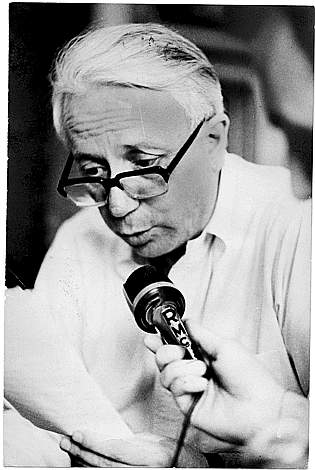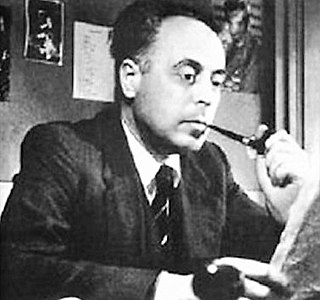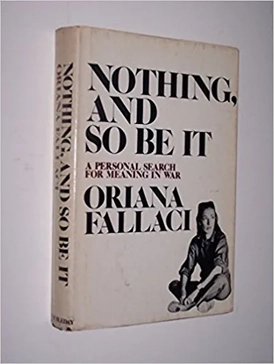
Oriana Fallaci was an Italian journalist and author. A member of the Italian resistance movement during World War II, she had a long and successful journalistic career. Fallaci became famous worldwide for her coverage of war and revolution, and her "long, aggressive and revealing interviews" with many world leaders during the 1960s, 1970s, and 1980s.

Enzo Biagi was an Italian journalist, writer and former partisan.

Indro Alessandro Raffaello Schizogene Montanelli was an Italian journalist, historian, and writer. He was one of the fifty World Press Freedom Heroes according to the International Press Institute. A volunteer for the Second Italo-Ethiopian War and an admirer of Benito Mussolini's dictatorship, Montanelli had a change of heart in 1943, and joined the liberal resistance group Giustizia e Libertà but was discovered and arrested along with his wife by Nazi authorities in 1944. Sentenced to death, he was able to flee to Switzerland the day before his scheduled execution by firing squad thanks to a secret service double agent.
il Giornale, known from its founding in 1974 until 1983 as il Giornale nuovo, is an Italian-language daily newspaper published in Milan with an average circulation of 28,933 copies in May 2023. In 2006, it was considered one of Italy's main national newspapers.
Africo is a comune in the province of Reggio Calabria, in the Southern Italian region of Calabria located 74 kilometres (46 mi) from Reggio Calabria.

L'Espresso is an Italian progressive weekly news magazine. It is one of the two most prominent Italian weeklies; the other is the conservative magazine Panorama. Since 2022, it has been published by BFC Media.

Ennio Flaiano was an Italian screenwriter, playwright, novelist, journalist, and drama critic. Best known for his work with Federico Fellini, Flaiano co-wrote ten screenplays with the Italian director, including La Strada (1954), La Dolce Vita (1960), and 8½ (1963).
The Premiolino is the oldest and one of the most important Italian journalism awards. It is made annually to six journalists from print media and television for their career achievements and their contributions to the freedom of the press.

Tommaso Francesco Besozzi, also known as Tom, was an Italian journalist and writer. He is considered to be one of the most important post-war journalists of Italy and his writing style earned him the epithet "Hemingway of Europeo".

Arrigo Benedetti was an Italian journalist and writer. He was also the editor of important news magazines: Oggi (1939–1941), L'Europeo (1945–54), L'Espresso (1955–63), and Il Mondo (1969–72). Born as Giulio, he changed his name to Arrigo in 1933.

Interview with History is a book consisting of interviews by the Italian journalist and author Oriana Fallaci (1929–2006), one of the most controversial interviewers of her time. She interviewed many world leaders of the time.

Enrico Mentana is an Italian journalist and television presenter. He founded the Italian news programme TG5 and directed it from 1992 to 2004. In 2005, as Canale 5's editorial director, he conceived and curated the talk show Matrix until his resignation in 2009 due to a disagreement with the network. Since June 2010 he has been the director of the news programme TG La7. He is also the director of the online newspaper Open, which he founded in December 2018.

Il Mondo was a weekly political, cultural and economic magazine founded by Gianni Mazzocchi and directed by Mario Pannunzio. It existed between 1949 and 2014.

Tempo was an illustrated weekly news magazine published in Milan, Italy, between 1939 and 1976 with a temporary interruption during World War II.
Articolo 21, liberi di... is an Italian advocacy group promoting freedom of expression. They also operate the online newspaper, Article21.info.

Gianni Mazzocchi was an Italian magazine editor-proprietor, originally from Marche, with an unusual degree of energy and entrepreneurial flair; he moved north to Milan and became a leading print-media magnate. He founded more than fifteen national magazines including several, such as Il Mondo, L'Europeo, and Quattroruote, that continued to feature prominently on the nation's news stands long after his death.
Adele Cambria was an Italian journalist, writer and actress.

Nothing, and So Be It is a first-hand account book by Italian journalist Oriana Fallaci about a year as a war correspondent in Saigon, Vietnam, between 1967 and 1968. It was first published in Italian in 1969. Fallaci based the book on the testimony of several American soldiers who participated in the Mỹ Lai massacre and the reports of some of the survivors. She received the Bancarella Prize (1970) for the book.
Oriana Fallaci: The Journalist, the Agitator, the Legend is a biography of the Italian journalist and writer Oriana Fallaci. It was written by Cristina De Stefano and published by Rizzoli in 2013.














